British Columbians! Lift up a chorus!
To greet the arrival of Cadborosaurus!
He may have been here quite a long time before us,
But he’s shy and don’t stay round too long, so’s to bore us.
Cadborosaurus! Cadborosaurus!
Come up and see us again, you old war ‘oss!
Letter to the Victoria Daily Times from I. Vacedun
It was 5:30 in the evening, the end of a rainy day in Seattle and I was driving north along Lake Washington by Seward Park. I always look out to the water to see if I can spot the local beaver or maybe a passing otter, but that day, near the entrance of Andrew’s Bay I saw something completely different in the dark grayish blue water. The lake wasn’t rough, but it created ripples, the kind that constantly play with the mind – was that a bird? beaver? or just the water? In the distance I saw three, dark colored humps, lined up in a row, with a different shape at the head, all gently undulating up and down in the water…very reminiscent of a sea serpent. But of course I was looking at a lake, not the ocean, there can’t be sea monsters there. Or can there?
As I drove north along the lake and drew closer to the shapes, they became more clear. It wasn’t a sea monster at all, but three rowing boats stretched out across the water, a motor boat at lead. There was no Loch Ness Monster in Lake Washington after all, but just on the other side of Seattle, in the Salish Sea, there is a sea monster, one that has been seen not once, but dozens of time over the last hundred years. Its name is Cadborosaurus.
The Sea Monster Cadborosaurus
My observation was not unlike that of many other people who have reported from Canada to Washington’s outer coast a long, serpentine sea creature swimming fast through the saltwater, often revealing multiple humps and a head out of the water. Sightings of Cadborosaurus, or Caddy, are not only numerous, but surprisingly consistent. Most people described Caddy as having a head like a camel or horse and a long, sinuous body with a serrated ridge down its back. There are a few variations, some report a smooth back, a few saw a mane and Caddy has been reported being green, brown, and several other colors and sizes vary, although they are generally on the large side.
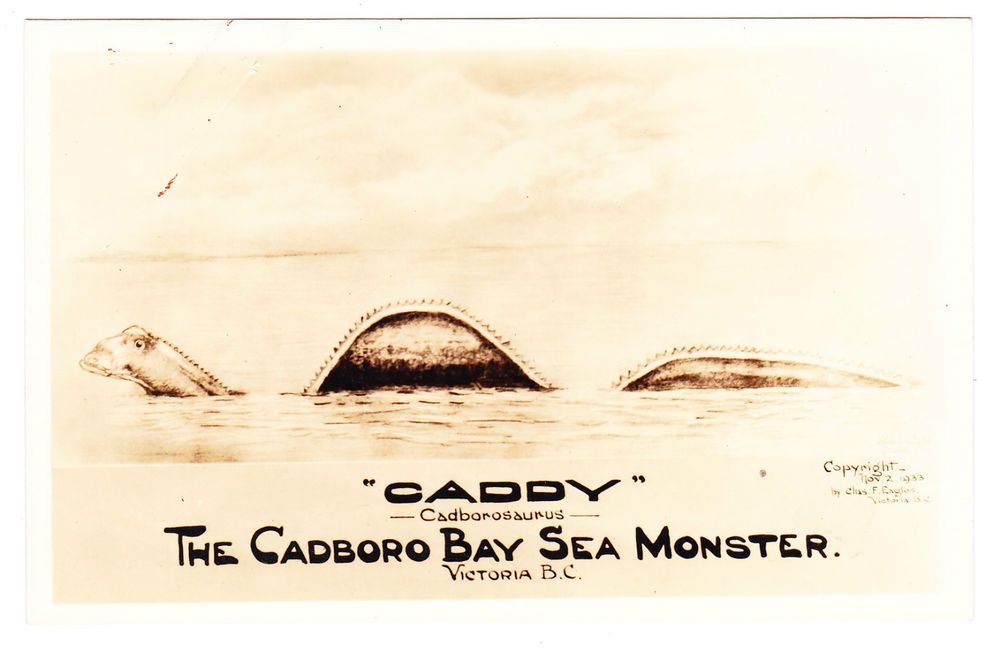
In their book Cadborosaurus: Survivor from the Deep, Dr. Paul LeBlond and Dr. Edward Bousfield point out that there are multiple petroglyphs from Native Americans found around the Salish Sea. One is located on the Nanaimo River in British Columbia and depicts a long creature with a dragon-like head, very similar in appearance to descriptions of Caddy. The Manhousat people, from the Sydney Inlet area also in B.C., had stories about ‘hiyitl’iik’ a creature described very much like a sea serpent, and other Salish Sea area native people had very similar creatures in their own stories. Was hiyitl’iik a mythical creature like the thunderbird, or did Native Americans of the Salish Sea see Caddy long before settlers arrived?
Reports of Caddy sightings can be found from settlers from the late 1800’s. From LeBlond and Bousfield’s book Cadborosaurus, an observation is reported from 1897.
“I saw ahead of us what I thought was a piece of driftwood. On getting closer, I noticed it was moving towards us…What we could see was an object…sticking out of the water about two feet. When within a few feet of it the end uncoiled and raised a long neck about five feet out of the water with a head like a snake’s on it.”
Cadborosaurus: Survivor from the Deep by Dr. Paul LeBlond and Dr. Edward Bousfield
Similar observations would come continuously throughout the years from hunters, fishermen, beach walkers and people from all walks of life. But it was in 1933 Caddy landed on the front page of the Victoria Daily Times and gained everlasting fame. Spotted near Chatham Island in Cadboro Bay on Vancouver Island. With a snort and a hiss, the witnesses saw a long, dark green creature as large as a whale and the newspaper reported on it and the name Cadborosaurus bestowed upon it for the name of the bay. Caddy would be seen in that location many more times.
With that first newspaper report, Cadborosaurus sparked an obsession for Archie H. Wills, the managing editor of the Victoria Daily Times and an ongoing rivalry with another newspaper, the Daily Colonist, who tried to give the sea serpent another name, Amy, which never stuck. Cadborosaurus it was.
What’s interesting is that although observations peaked during Caddy’s early fame, they have never stopped and continually roll in. The authors of the Cadborosaurus book analyzed all of the reports and in the index, list all the sightings they deem as credible and not logs or other items commonly mistaken as sea monsters. Scanning through them, the other striking thing is how consistent the descriptions of Caddy are and how centered they are around Victoria, B.C.
When writing the book, the authors noted that there are likely many more observations than recorded in the book for one simple reason. People were embarrassed to report their observation. Many of the people the authors talked to confessed they had never before told anyone about what they saw, or hardly believed it themselves. One had just opened a lumber mill and feared ridicule so kept his observation to himself for the sake of his new business. Some people carried their experiences for years before finally divulging what they saw. But not all.
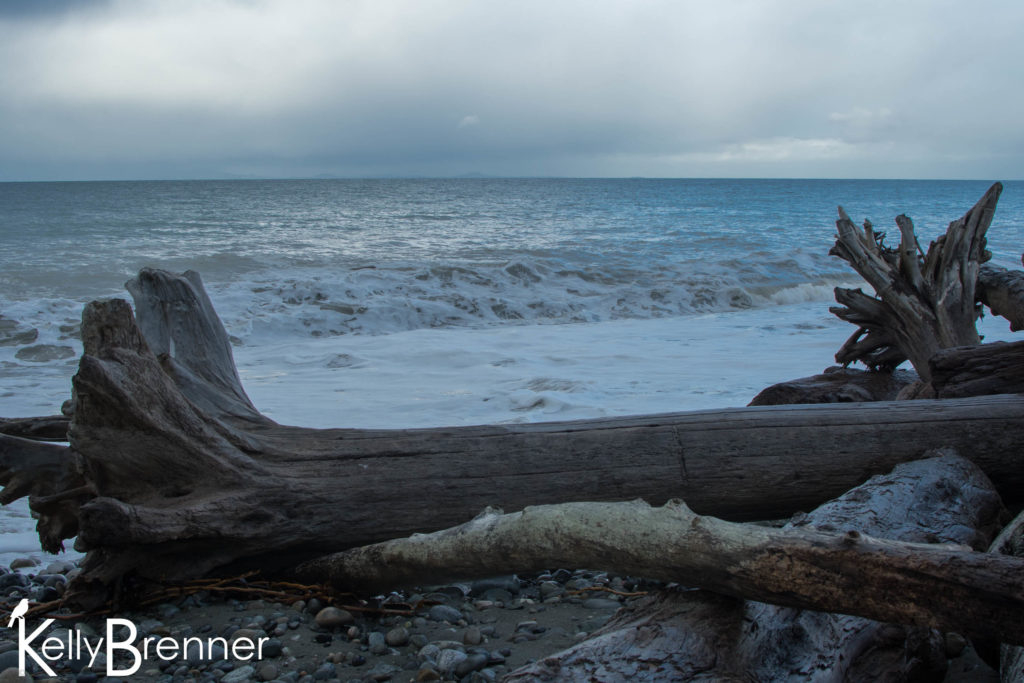
One of my favorite stories is that of Cyril Andrews and Norman Georgeson from 1933. They were hunting ducks just north of the San Juan Islands, on the Canadian side of the border when they shot a goldeneye, but not enough to kill it, and the duck swam into a bed of kelp. The hunters were pursuing the duck when they saw the head of a sea monster rise nearby before disappearing beneath the water. As one hunter came close to the wounded duck, the sea monster’s head kept reappearing closer and closer to the duck, a head he described as similar to that of a horse, but without ears or nostrils. At one point, both hunters witnessed the head and one coil of the sea monster’s body rise out of the water before it sank.
I was still only ten feet away from it, with the duck right beside the thing, when to my horror it gulped the bird down its throat. It then looked at me, its mouth wide open, and I could plainly see its teeth and tongue, which were like those of a fish. When it closed its mouth, all the loose skin folded neatly at the corners while its breathing came in short, sharp pants, like a dog after a run.
Cadborosaurus: Survivor from the Deep by Dr. Paul LeBlond and Dr. Edward Bousfield
After consuming the duck, gulls descended and Caddy snapped at them before finally vanishing underwater. There are other reports of Caddy and birds. In one case, a witness watched a strange animal battle with ducks and in another instance, an artist reproduced an series of illustrations of his observation of Caddy trying to snatch birds out of the air.
The Haida Gwaii Carcass
Despite all the reported sightings, there has been little other proof of Caddy’s existence. Suspected sea monsters have washed up on beaches around the world over many years, but almost all of them have been easily explained. Many were basking sharks, which due to the cartilaginous make up of their bodies, create truly bizarre shapes as they decompose. Others are decomposing whales, sharks, sea lions or other completely normal marine life. But one dead creature, wasn’t so easily explained. It didn’t arrive washed up on a beach, but straight from the belly of a sperm whale.
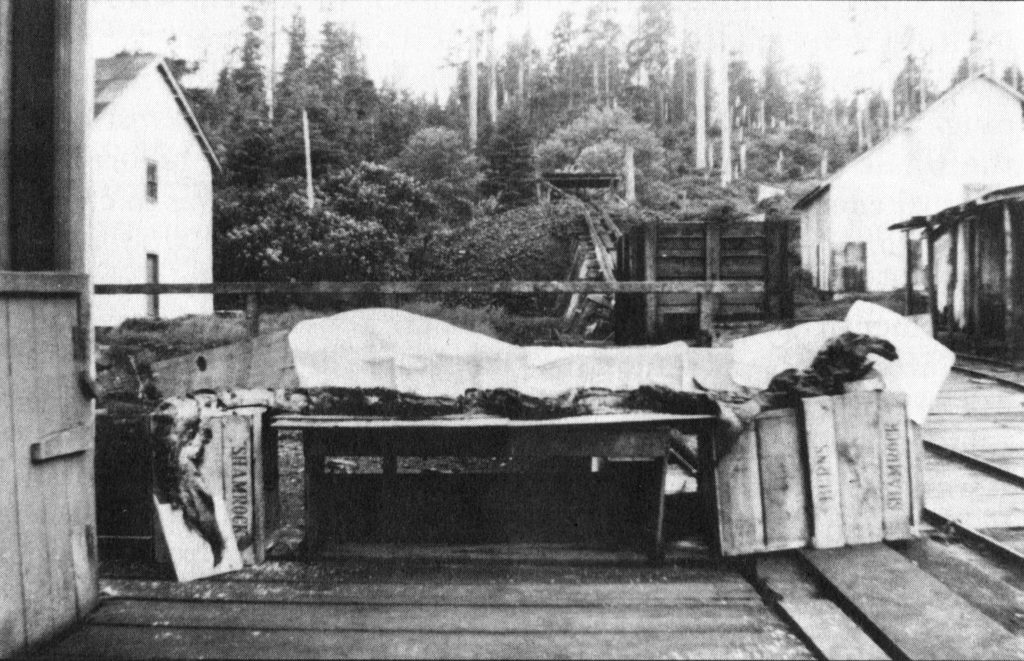
It is known as the Haida Gwaii carcass. In 1937 a sperm whale was caught near the Naden Harbor whaling station and in the process of cutting it open, the whalers discovered something strange in its stomach. It created a lot of excitement amongst the whaling crew, who were very familiar with the local marine life, and it was set out and photographed by the station manager, F. S. Huband.
The mysterious creature was still intact and according to the authors of Cadborosaurus, completely unknown to the whaling station workers who were well acquainted with other deep sea creatures. The creature was described, “reptilian appearance 10 ft 6 in in length with animal like vertebrate and a tail similar to that of a horse. The head bears resemblance to that of a large dog with features of a horse and the turn down nose of a camel”.
The photos of this mysterious creature have become infamous and to some, proof of Caddy’s existence. What happened to the carcass is unknown, but what it is has never been fully explained and to this day, it remains one of the most interesting pieces of the Cadborosaurus story.
Caddy is not a mythological monster from old, medieval maps, but a current and living sea serpent right in our own backyard that continues to intrigue the curious.
Header image is Edizgigantus by Henry Thomas Guptill

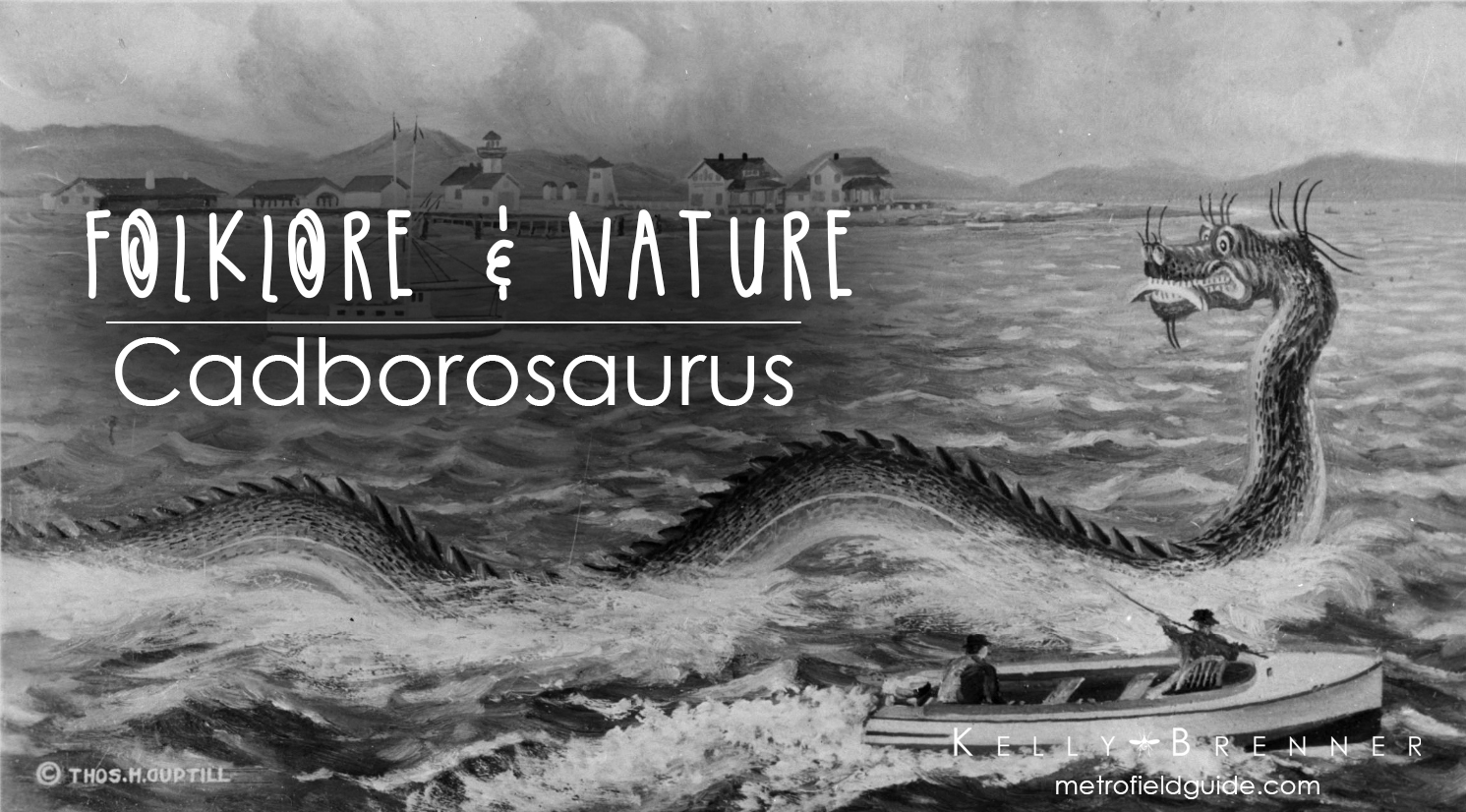



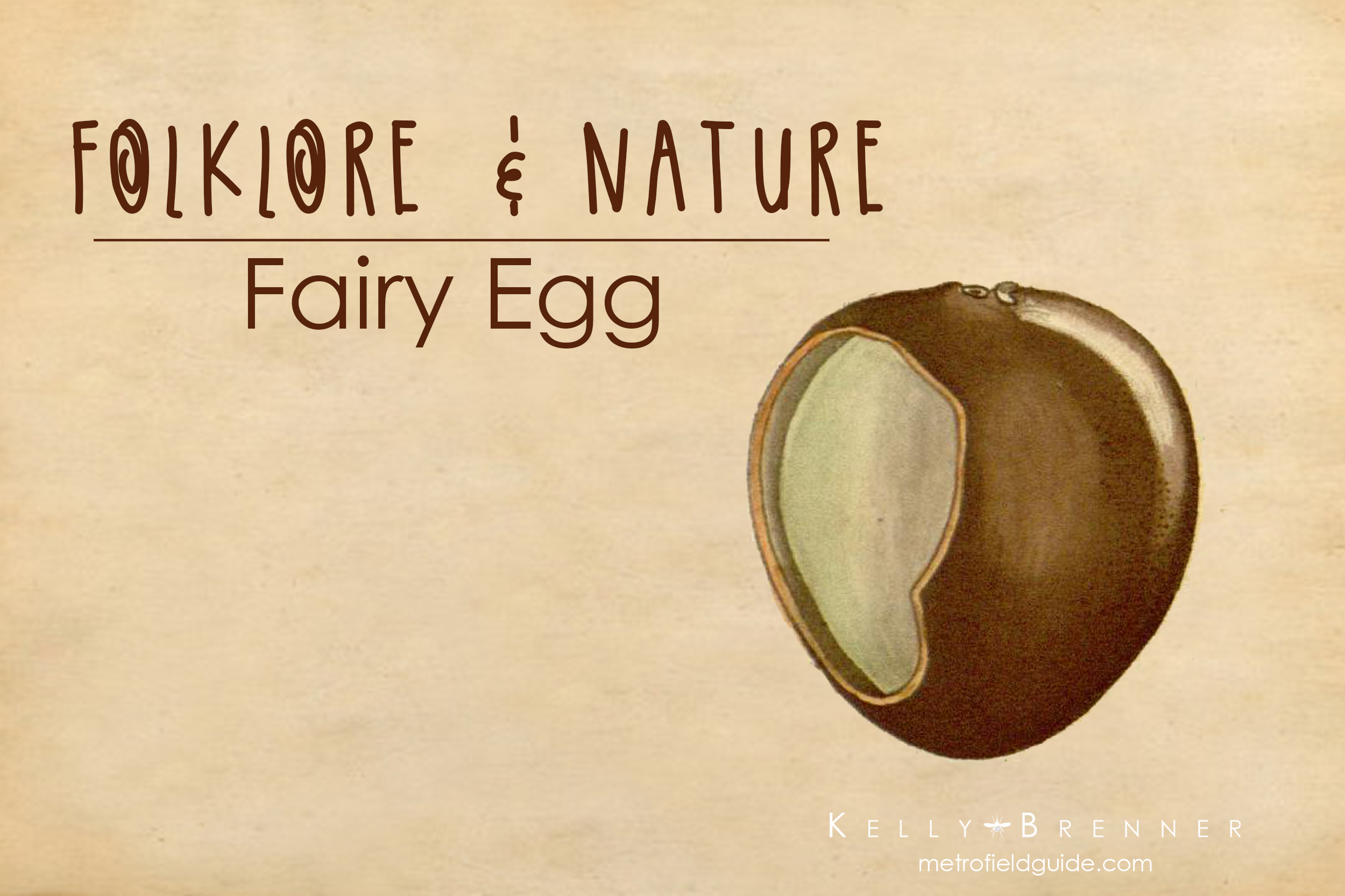

This is very interesting! If other examples of consistent sightings of serpent-like sea monsters interest you, I recommend checking out Philip Hoare’s book “Leviathan”. In it (I’ve since lent the book out so can’t identify the page or chapter I’m afraid) he describes various encounters, mostly from the eastern coast of the USA, which sound quite similar to the animal in these reports.
I do wonder if everyone is reading reports of sea serpents, and then making up an encounter or subconsciously creating a false memory. But still, the possibility that something is genuinely out there is fascinating!
Cheers,
David
Thank you David! I have read part of that book, but never finished it. I will have to revisit to learn about the east coast observations. There are a few other sea monsters similar to Caddy like the Loch Ness Monster, and also Ogopogo which is found in Canada and Storsjöodjuret which is from Sweden. It’s fascinating these observations continue today.